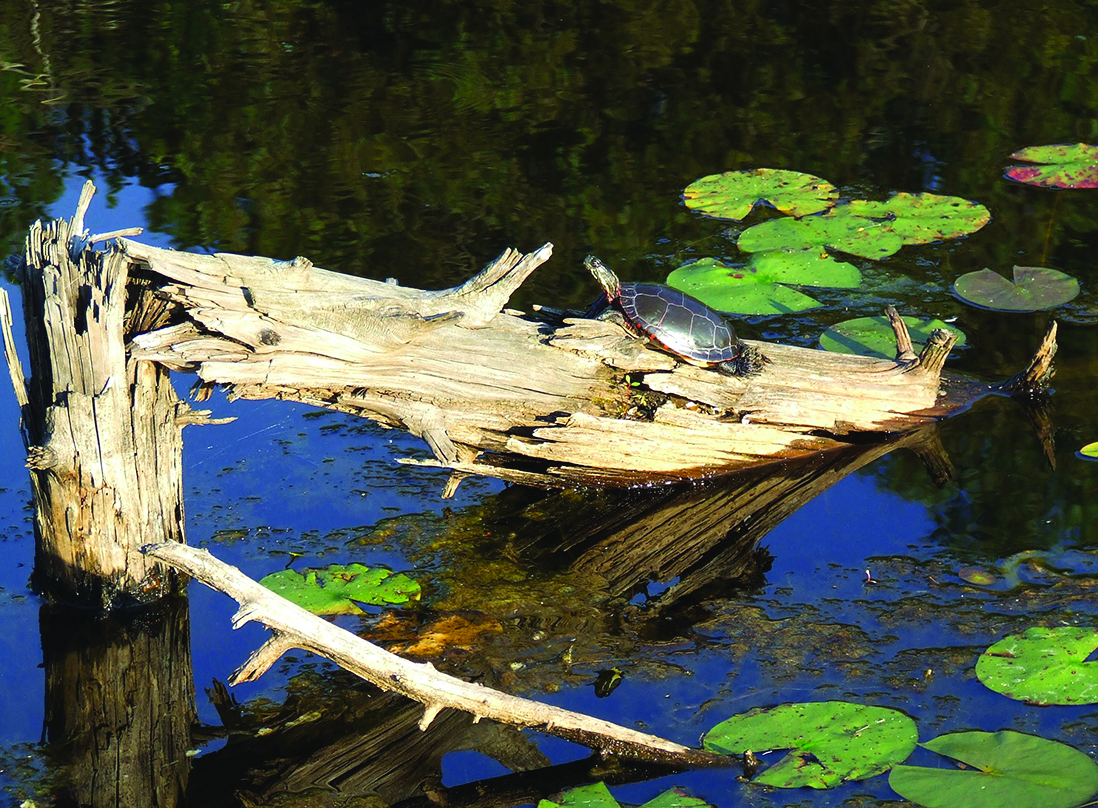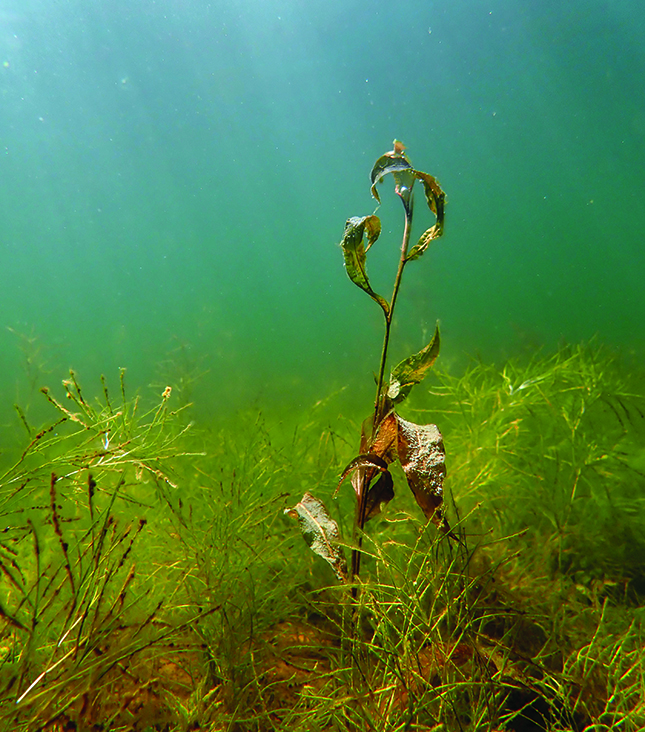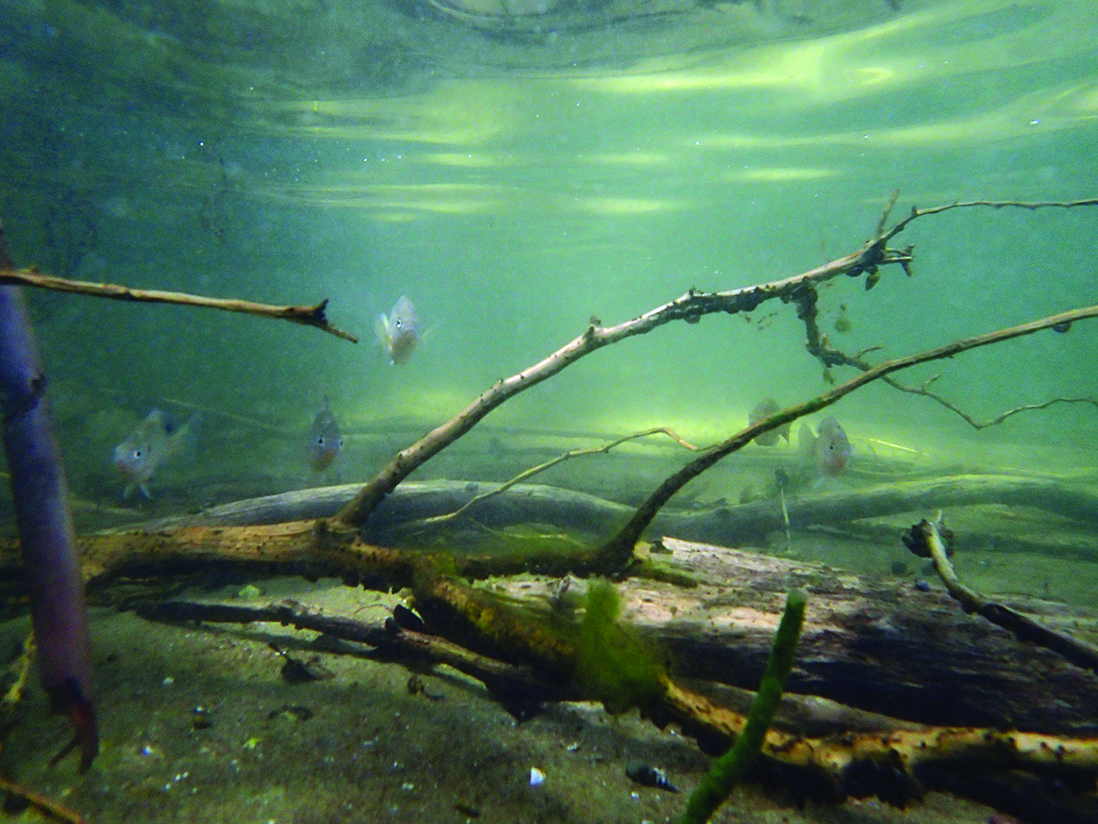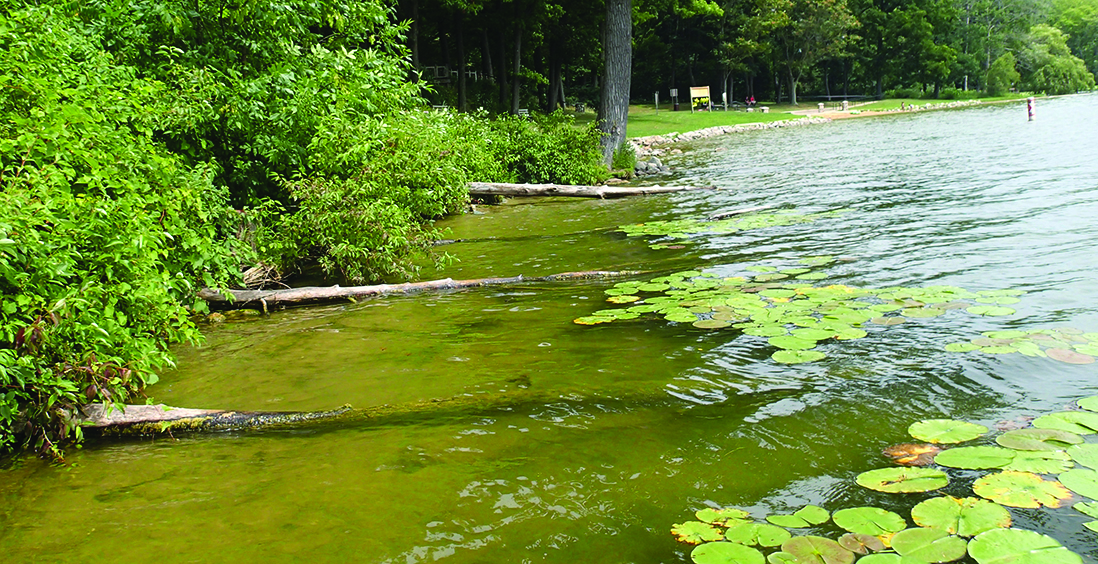
Smart Shorelands: Planning Your Nearshore Garden
DOWNLOADJanuary 4, 2024 - Erick Elgin, Michigan State University Extension
Extending your lakefront garden into the water opens an exciting new opportunity to enhance your property’s beauty and function. Elegant bulrush with pondweeds growing below create interest while providing safe shelter for many of the lakes’ fish, birds and other animals. Placing logs that extend from the shoreline edge out into the lake improves habitat further while also providing an attractive feature from both land and water. The water in front of your shoreline does not need to end your gardening; in fact, it might be one of your most important gardens.
The near shore or “littoral zone” is the area of a lake that can support rooted aquatic plants. This zone is typically found around the edge of a lake but can also be found wherever water is shallow. The littoral zone provides habitat to a variety of lake wildlife from dragonflies to fish to turtles. In addition, aquatic plants help reduce shoreline erosion by absorbing and reducing wave energy. When gardening in the littoral zone, consider whether your desired features will support what is best for the lake. Removing native plants, installing seawalls and building sandy beaches destroys the natural features that protect the lake. Therefore, protect the plants you already have on your shoreline and enhance where you can.

Plants for your nearshore garden
Lakes are held in public trust and therefore protected by the laws of the state of Michigan. As a result, there are rules that need to be followed if you want to garden in the lake. One important rule requires using native plants for all plantings in the littoral zone of lakes. Native plants are very beneficial to lakes, so be sure you select and plant Michigan native plants.
Native plants that live in the littoral zone of lakes are lumped into three broad categories: emergent, submergent and floating-leaf. Emergent plants, those that extend above the water like hardstem bulrush and pickerelweed, can live in deep water but are best suited for a water depth around 0 to 18 inches. Floating-leaf such as white water lily and submersed plants, those under water like pondweeds, typically grow best between 1.5 feet and 15 feet of water.



Plant species within each of these groups can bring wonderful texture and color to your lake garden. If you also want to help fish and wildlife, focus on plant species that attract desirable species. For example, you may be able to see northern pike spawning in the spring if you plant hardstem bulrush on which these fish deposit their eggs.
Of the three categories of plants, native emergent species are the easiest to find at local native plant nurseries. Native floating-leaf and submersed species are typically hard to come by. Beware of exotic and invasive aquatic plant species at plant nurseries that are sold for other purposes. Remember, only native plants can be used in lakes. If in doubt, ask an expert before you buy. Luckily, you may not need to plant because native aquatic plants may naturally colonize your lakefront garden if you create the right conditions for them to grow.
Logs add a beneficial and artistic touch
Placing logs next to the shoreline in the lake can add a great focal point and will protect newly planted or newly colonizing aquatic plants. Historically, Michigan lakes contained many downed trees that fell into the lake through time. These partially submerged logs provided wonderful refuge to fish and resting spots for turtles. The logs also helped slow shoreline erosion and improved conditions for plant growth. Unfortunately, as people built structures along the shoreline, many removed logs from the water. Placing logs back into the water as part of your garden design will benefit the lake and your new plantings.
You will need a permit to place a log into the lake along your shoreline. In that permit, there are a few things that need to be planned out including how you will attach the log to your shoreline so that it does not move around. Fortunately, there are many installation designs you can choose from and state agency staff and professionals can help.


Permits: What do I need to know?
Plan ahead to apply for permits. The Natural Resources and Environmental Protection Act, 1994 PA 451, as amended (NREPA) protects Michigan’s environment and natural resources by regulating discharges into the environment, and use and development of certain lands and waters. Michigan law requires that you receive a permit from the Michigan Department of Environment, Great Lakes, and Energy (EGLE) before conducting certain activities in inland lakes and streams. These activities include dredging, filling, constructing or placing a structure on bottomlands, constructing or reconfiguring a marina, interfering with the natural flow of water, or connecting a ditch or similar waterway to an inland lake or stream.
Additional resources
- Michigan Natural Shoreline Partnership
- Wisconsin Healthy Lakes Program – Fish Sticks
- Joint Permit Application information
- More Smart Gardening for Shoreland tip sheets

Updated December 2023. This publication is supported in part by the Crop Protection and Pest Management Program 2017-70006-27175 from the USDA National Institute of Food and Agriculture. Any opinions, findings, conclusions, or recommendations expressed are those of the author(s) and do not necessarily reflect the view of the USDA.
For more information on a wide variety of Smart Gardening topics, visit www.migarden.msu.edu or call MSU’s Lawn and Garden hotline at 1-888- 678-3464. Additional shoreland resources can be found on the MSU Extension Center for Lakes and Streams website at www.canr.msu.edu/cls.



 Print
Print Email
Email





